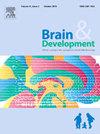偏头痛和晕动病的家族史可以用于儿童偏头痛的诊断吗?
IF 1.3
4区 医学
Q4 CLINICAL NEUROLOGY
引用次数: 0
摘要
目的儿童偏头痛是一种由多种遗传和环境因素引起的复发性神经生物学复杂疾病。本研究探讨了ICHD-3诊断标准与偏头痛和晕动病家族史的临床相关性。方法从22所初中和26所高中随机抽取10 ~ 18岁的青少年为研究对象。该调查以土耳其语编写,询问了头痛特征(ICHD-3诊断标准:7项)、偏头痛家族史和晕动病的存在(2项)。结果根据调查数据,探索性因子分析发现了4个主要因素。收集畏光、疼痛发作时间≥1 h、头痛发作4次以上、偏头痛家族史因子-1、呕吐和恶心因子-2、搏动性疼痛、前额和双颞定位因子-3、逃避常规体育活动因子和运动病因子-4。结论偏头痛是一种多因素的脑部疾病,已发现了强有力的遗传证据。此外,在目前的文献中,三叉神经系统和前庭神经核之间的紧密联系表明,晕动病和偏头痛之间的关系不容忽视。因此,除ICHD-3外,儿童偏头痛的阳性家族史和运动病是重要的附加诊断线索。本文章由计算机程序翻译,如有差异,请以英文原文为准。
Can a familial history of migraine and motion sickness be used in the diagnosis of childhood migraine?
Objective
Childhood migraine is a recurrent neurobiological complex disease and caused by multiple genetic and environmental factors. In this study, the clinical relevance of ICHD-3 diagnostic criteria, familial history of migraine and motion sickness was investigated.
Methods
This study was conducted on children aged 10–18 years, who were randomly selected from 22 middle and 26 high schools. The survey, prepared in Turkish, asked about headache characteristics (ICHD-3 diagnostic criteria: 7 items), familial history of migraine, and presence of motion sickness (2 items).
Results
According to data from the survey, 4 main factors emerged in the exploratory factor analysis. Photophobia, pain attack duration ≥1 h, headache attacks more than 4 times, familial history of migraine in factor-1, vomiting and nausea in factor-2, pulsatile pain and forehead and bitemporal localization in factor-3, avoidance routine physical activities and motion sickness in factor-4 are collected.
Conclusion
Migraine, in which strong genetic pieces of evidence have been uncovered is a multifactorial brain disease. Moreover, the intense connections between the trigeminal system and vestibular nuclei demonstrated in the current literature reveal that the relationship between motion sickness and migraine cannot be ignored. Therefore, a positive familial history and motion sickness in childhood migraine are important additional diagnostic clues in addition to ICHD-3.
求助全文
通过发布文献求助,成功后即可免费获取论文全文。
去求助
来源期刊

Brain & Development
医学-临床神经学
CiteScore
3.60
自引率
0.00%
发文量
153
审稿时长
50 days
期刊介绍:
Brain and Development (ISSN 0387-7604) is the Official Journal of the Japanese Society of Child Neurology, and is aimed to promote clinical child neurology and developmental neuroscience.
The journal is devoted to publishing Review Articles, Full Length Original Papers, Case Reports and Letters to the Editor in the field of Child Neurology and related sciences. Proceedings of meetings, and professional announcements will be published at the Editor''s discretion. Letters concerning articles published in Brain and Development and other relevant issues are also welcome.
 求助内容:
求助内容: 应助结果提醒方式:
应助结果提醒方式:


